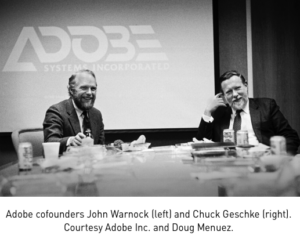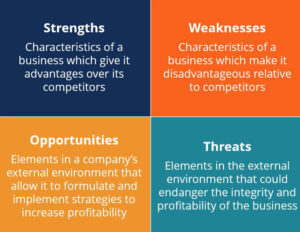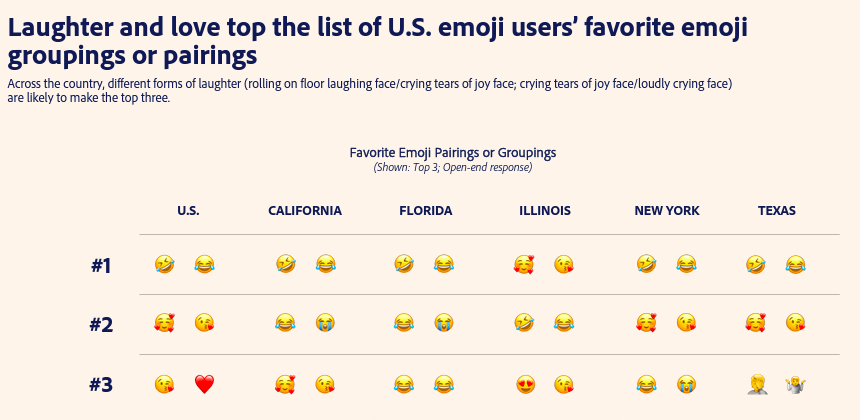The Seybold Report blog has moved to a new site, one we have created to tell the world about the Seybold Report newsletter. The title is still a part of the Joss Group, but we wanted to showcase this historic and important newsletter by giving it its own site.
On January 22, 1984, during that year’s Super Bowl, the now-iconic and totally unforgettable Apple Computer advertisement aired. The commercial never showed the computer itself, but ended with this audio: “On January 24th, Apple Computer will introduce Macintosh. And you’ll see why 1984 won’t be like ‘1984.’”
We were there, and we remember. And, we would strenuously argue the Macintosh did change the world in some ways.
But, we would also argue the real reason 1984 was not like the book 1984 and one of the foundational reasons the entire world began to change so profoundly that year is because of the software that is PostScript and not hardware that was Macintosh.
So, we want to draw attention to a December 2022 announcement and article released by the Computer History Museum in Mountain View, California. The museum announced the public release of PostScript’s source code. The article talks about the origins of PostScript and its significance inside the enormous world that is Print and points to its wider significance to the world that is, well, the entire World. For Seybold Report readers and followers, the article is a must-read.

“Today, the digital printing press has far exceeded anything envisioned by the Adobe cofounders when they first set out create PostScript with their team. Almost everything printed on paper is done so using computers. Indeed, in many areas of the world, computers have become the overwhelming tool for writing. As Doug Brotz puts it, PostScript ‘democratized the print world.’ With PDF now so successful that it too has become a global standard, the number of PDFs created each year is now measured in the trillions.”
In a 2022 in review article, industry observer and crusader Deborah Corn makes two bold statements we wanted to highlight in this post:
- “We have a tremendous workforce development problem, that is swiftly moving toward a crisis.”
- “Since I don’t have a vested interest to attract people to a specific program, print organization, or company, I can see the bigger picture. In this case, PRINT has a serious branding issue.”
Corn makes several suggestions in her article about what print providers should do in 2023 to help bolster the Print’s brand. We suggest readers of this blog read her article and share with her and the Joss Group their reactions. We look forward to hearing from you.
The Joss Group says, “PRINT is vital!” Deborah Corn says, “Print has a serious branding issue.” Both statements are true, but there is more to the story. It is time for more than a few serious discussions. Let us get started!
Once upon a time, posters full of dazzling images and arresting slogans dominated the media landscape. They were displayed in shop windows, covered billboards, and were even draped over human bodies when the 19th-century Sandwich Men patrolled city sidewalks carrying advertising posters over their shoulders.
The Library of Congress’ collection of posters traverses nearly two centuries and multiple continents. Its contents tell the story of an evolving form that exhibited the work of major artists and promoted everything from food to political candidates.
Here we present images of a few of the posters in the Library’s collection. To view the entire article about posters owned by the Library of Congress, please click here to view the January/February issue of the Library of Congress magazine.



It is almost 2023, and many graphic arts businesses will be gaining or losing employees in the new year. At least that is the takeaway message from a recent Robert Half survey. “According to the company’s biannual Job Optimism Survey of more than 2,500 professionals in the United States, 46% of respondents are currently looking or plan to look for a new role in the first half of 2023, up from 41% six months ago.”
The graphic arts industry today relies heavily on contracted labor, either through small firms which are really collectives of contractors working together or through individuals who contract their services out to a number of companies. Thus, the finding of “nearly three in 10 professionals (29%) are considering quitting their job to pursue a full-time contracting career” caught our eye at the Seybold Report.
We agree with the statement in the Robert Half press release from Paul McDonald, senior executive director of the company, “The employment landscape is changing day to day, and it will be interesting to see how the next few months pan out. Regardless of what happens, employers cannot take their foot off the pedal when it comes to earning trust and driving engagement with current staff and creating a positive experience for potential hires.”
For more findings from the Robert Half survey, click here.
No surprise here: American Greetings likes cards, all kinds of cards including printed cards. And, the company says, most adults in the United States do, too. More than half send some kind of card during the year-end holiday season.
The press release about the study got us thinking about one of our favorite Seybold Report subjects: the amazing vitality of Print. So, here is a quick gallery of some of the holiday-related print products and projects most people (but not us!) take for granted. Spread the word: Print is Vital!









From Quocirca
Remanufacturing is a key contributor to the circular economy. It prolongs the life and value of a product by recovering and reusing materials from retired products. While circular practices such as recycling programmes (hardware and consumables) and the use of post-consumer recycled (PCR) material are well established in the print industry, the remanufacturing of products is less widely adopted. With sustainability climbing the agenda, and supply chain disruption ongoing, should print manufacturers advance their remanufacturing strategies?
Print and imaging devices have various environmental impacts during manufacture, use, and disposal. These include raw material consumption; polluting in manufacturing; energy consumption in use; and waste generated during end-of-life disposal. However, through a mix of proactivity and response to regulations such as the WEEE Directive, the print industry has worked to embed sustainability principles. For companies at the vanguard of these efforts, this is paying dividends, as buyers become more scrupulous about the lifecycle impacts of the products they purchase.
Circularity in the Print Industry
A circular economy is an alternative to the traditional linear economy model of take-make-dispose. Circular practices reduce resource and energy use by extending the lifetime of products, components and materials. This keeps resources in use for as long as possible, extracting maximum value from them whilst in use, and then recovering or regenerating products and materials from them at the end of life.
Circularity is already well established in the print industry. Products are often designed to reduce environmental impact across their product lifecycle. Key elements include energy efficiency, reliability, repairability and recyclability. Recycling programmes for both hardware and consumables are widespread and in some cases recycling services enable print manufacturers to incorporate components and materials into new products.
Print manufacturers are also increasing the use of recovered materials, such as recycled and recyclable content into new products. For instance, according to HP’s Sustainable Impact 2021 report, HP’s goal is to use 30% post consumer recycled (PCR) content plastic across HP’s personal systems and print product portfolio by 2025. Meanwhile, Lexmark report that their goal is to increase the average post-consumer recycled content plastic in their printer models to 50% by 2025. In FY 21, Epson report that the company began sales of products that contain recycled materials and refurbished equipment.
Click here to read the rest of this article on the Quocirca site.
By Steven Schnoll, Managing Director, Schnoll Media Consulting
As a leader, it is your job to inspire, provide clarity and ensure your team is thinking in a manner that integrates traditional print processes with new end-to-end content delivery methods. You might know exactly what you need to do with conventional print techniques, but you might not be clear on the purpose or how to do things withnew digital technologies.
You might know you need to have that difficult conversation with your employees, but you are less sure about how to have it. You might know you need to hold your team accountable, but you do not have the skills to do it in a manner that builds authentic engagement.
One can no longer rely on old school traditional methods of running a business. The challenge is how to evolve your leadership from the existing status quo to lead effectively with innovative digital cross-media opportunities. The process of doing this can be daunting.
Let me test your imagination. It is 2022, whether you are the owner or a chief executive leading your company, you are facing a dynamic world of how to develop not only survival tactics, but strategies to grow one’s business as well. The world is still struggling with COVID-19 and a complex economy.
On a more industry-specific situation, the paper shortage is complicating the ability to obtain the most vital component of operating a print operation. Also, customers are questioning the use of print as the best method of reaching their respective target audience in their marketing campaigns. Now layer in the enormous debt some companies have for equipment not getting used to full capacity and the challenge to hire needed and qualified personnel. However, you love this industry and are dedicated to it! Have I sufficiently tested you?
So, what does one do to amplify your business model with visionary critical thinking to inspire the team with new ideas? Developing a blueprint with customer scalable aligned business strategies is not easy. It all starts with looking at new opportunities that solve customer challenges with real-time solutions. Setting new company goals is filled with many difficult issues.
There is a thought process for leaders called soft skills (sometimes referred to as human skills) that are composed of tasks such as good communication, negotiation, cooperation, these are essential abilities for a leader who seeks to be effective and admired. Do you think you possess some or all these characteristics?
Here are a few questions to reflect on:
- When was the last time you truly examined what makes your organization work; the business models, corporate culture, and coordinating mechanisms that empower it?
- Have you thought about the current and future business models you will need to guide your company to future success?
- Have you looked at new operational models?
- Have you engaged your workers to better understand their concerns?
- Have you tried to inspire them to take chances and reach new conclusions about their everyday work processes?
You cannot sleep on these actions. Our industry is under assault and a good leader will take the necessary action to develop workable strategies to not only survive, but to thrive as well. There are many possible paths to success for good ideas. The challenge as I see it is how does one weigh their company options and confidently make the right decisions?
One of the great starting points for developing your new business plan is getting the team to do a SWOT analysis. Has your company ever executed a SWOT? if so when was the last time you executed one? No matter how big or small the company, this is an essential step in building a plan for the future.

SWOT stands for Strengths, Weaknesses, Opportunities and Threats. This is not a difficult process to engage in with the team. One must know all these elements before any steps can be taken. A true leader must engage the team, get all of their input, and then determine what is probable, plausible, and possible for their respective company. Once everyone on the team understands the SWOT analysis, then steps can be taken to move forward. You are now executing the first elements of the practical skills communication.
Once you have completed the SWOT analysis, the team needs to analyze the results and negotiate a path forward. That generally starts with developing a strategic plan; a blueprint for today and tomorrow. Whether you want to harness new innovations or pivot your existing business mode, the task ahead can be tricky and needs a strong leader. One of the first things I suggest is examine your story line; what is your message to your customer?
If you do not have a compelling story, no one is going to listen. This often starts with the name of your company. If you call yourself a printing company, you may find you are hitting a stone wall. Customers will often think you only provide print services. Customers want suppliers that offer a diverse portfolio of multimedia services. You do not need to change the entire name of the company, but eliminating words such as print, graphics, litho and so forth. is quite often is a good starting point.
Do you know what IBM stands for? International Business Machines was one of the first electric typewriter manufacturers. It moved on to become a company broadly involved in a large variety of cutting-edge technologies.
Next is examining the empathic nature of your company with these five steps:
- Evaluating new technologies to determine best fits for the company and customer base.
- Planning and budgeting for future investments.
- Strengthening the talent pool with new hires and re-skilling current team members.
- Asking relevant customer questions to determine what is changing in their businesses.
- Ensuring one stays on course and does not get diverted by everyday challenges.
There is a problem I have often encountered that can make this process very challenging, cooperation among the team. Lack of cooperation often occurs when a key manager or executive cannot handle the truth the print world is in a state of flux with massive changes occurring. A leader must exhibit strong courage and leadership skills to overcome this situation. The method of dealing with the flow of information between all parties requires a complete rethinking of how one communicates to the target audience.
Savvy leaders must be at the forefront of innovation. Whether you want to harness new, innovative technologies, or unleash the creative talent of your staff, think out-of-the-box and stay disciplined. The relevant question is: how does one weigh their company options and confidently make the right decisions?
MIT Sloan Senior Lecturer Bill Fischer says: “New competitors, digitization of product and service offerings, and unforeseeable events are shaking up our businesses, economies, and global society. While innovation around products and services are necessary to stay ahead, business model innovation is essential for delivering longer lasting competitive advantage.”
One of the most important elements in achieving future success is transforming your existing workforce into a digital-ready one. Leaders should offer workerspay incentives to learn about new technologies they will need to give the companyaccountability and capabilities to exploit new products and services fully.
Some practical product offerings one can employ to make their company more customer viable in this digital world include:
- Database management;
- Graphic design;
- Web design and maintenance;
- Facilitating social media;
- Video production;
- Augmented Reality;
- Digital print engines (toner and inkjet);
- Wide format; and
- Promotional items
Other ideas include investigating labels and packaging, fabric/textile printing, and 3-D printing opportunities.
Many times, I hear printers say, “I do not have the resources to invest in any of these product offerings.” Well, answer a simple question. Over the years if a customer’s job required die cutting, foil stamping, perfect binding, etc., how did you facilitate these steps? Most likely you farmed it out to a reliable partner. Any difference here?
Printers have historically outsourced many services. Now is the time to identify potential new partners that can offer these services until you gain the financial resources or personnel to do it in-house.
As you can see, there are many areas to explore. Many can be confusing and financially challenging. As the company leader, you must carefully explore all your options. Your team is depending on you! You must understand all the risks in designing for the future and clearly demonstrate your leadership skills.
Every day we live in today’s society we realize digital mega-trends are changing the nature of our work environment. These work trends are making it much more difficult to operate successfully. I hope this piece has inspired graphic arts leaders to not only transform their businesses, but to also provide some ideas to help meet customer expectations as well.
New leadership behaviors are needed to make one’s business thrive in these challenging times. Do not be left behind, engage and encourage your team immediately; time is not on your side. Do not be a struggling leader. Immediate action is required. Remember, a great leader for your organization must articulate a business culture that is right for your company, your customers, and is nimble in the digital economy!
Steven Schnoll has been active in the graphic communications industry since 1969. During the past 23 years he has had the privilege to offer his consulting services to a diversified group of companies including Aflac, Aleyant, Association for Print Technologies, Bunting Co., Canon USA, Fenway Group, Harris & Bruno, HP, Maine Credit Union League, News America Marketing, Printing Industries of America, Leukemia & Lymphoma Society, Xerox, and Xmpie.
For more information, please visit Steven’s Web site.
Adobe has published a trend report on how people in the United States use emojis. The company surveyed 5,000 people. The results may surprise you. 😉
Here are a few of the findings:
- The majority of respondents 88%) report they are more likely to feel empathetic toward someone if they use an emoji.
- Three-quarters (75%) of the respondents feel more connected to people who use emoji.
- More than half (60%) of the respondents agree using emoji in their communications has improved their mental health.
- Half of respondents said they are likely to respond to a message if it contains an emoji (50%).
- Almost all (92%) of the respondents agree emojis can communicate across language barriers.
To read the full report, please click here.

On August 24, Ricoh USA announced a promising new educational program, and we wanted to share some of the news here along with some links to obtain further information.
ACE is a school-to-career program, which Ricoh says is appropriate for K-12 but also continuing education and adults searching for new careers (so we are thinking a good fit for high schools and community colleges). The company’s objective with the program is to help people learn skills they can put to use in the growing commercial print and sign and graphics industry, a laudable goal.
In addition to the curriculum the company provides, Ricoh says it will also offer job search guidance and help with placement for course graduates.
Currently, there is not much information on the company’s Web site about how people can qualify or train as instructors. It does say this, “ACE instructors will have the opportunity to become Certified Sign and Graphic Production Specialists. They will also have access to Webinars, hands-on experience, and mentorship to help them lead their students.”
Ricoh USA has signed up the Bibb School District in Macon, Georgia as its first program participant.
To learn more about Ricoh USA’s ACE program, please visit https://takealookatricohproduction.com/services/training-and-design.
To go directly to the online, please visit: https://takealookatricohproduction.com/services/brochures/advanced-career-education.pdf.
© 2025 The Joss Group
Theme by Anders Noren — Up ↑






